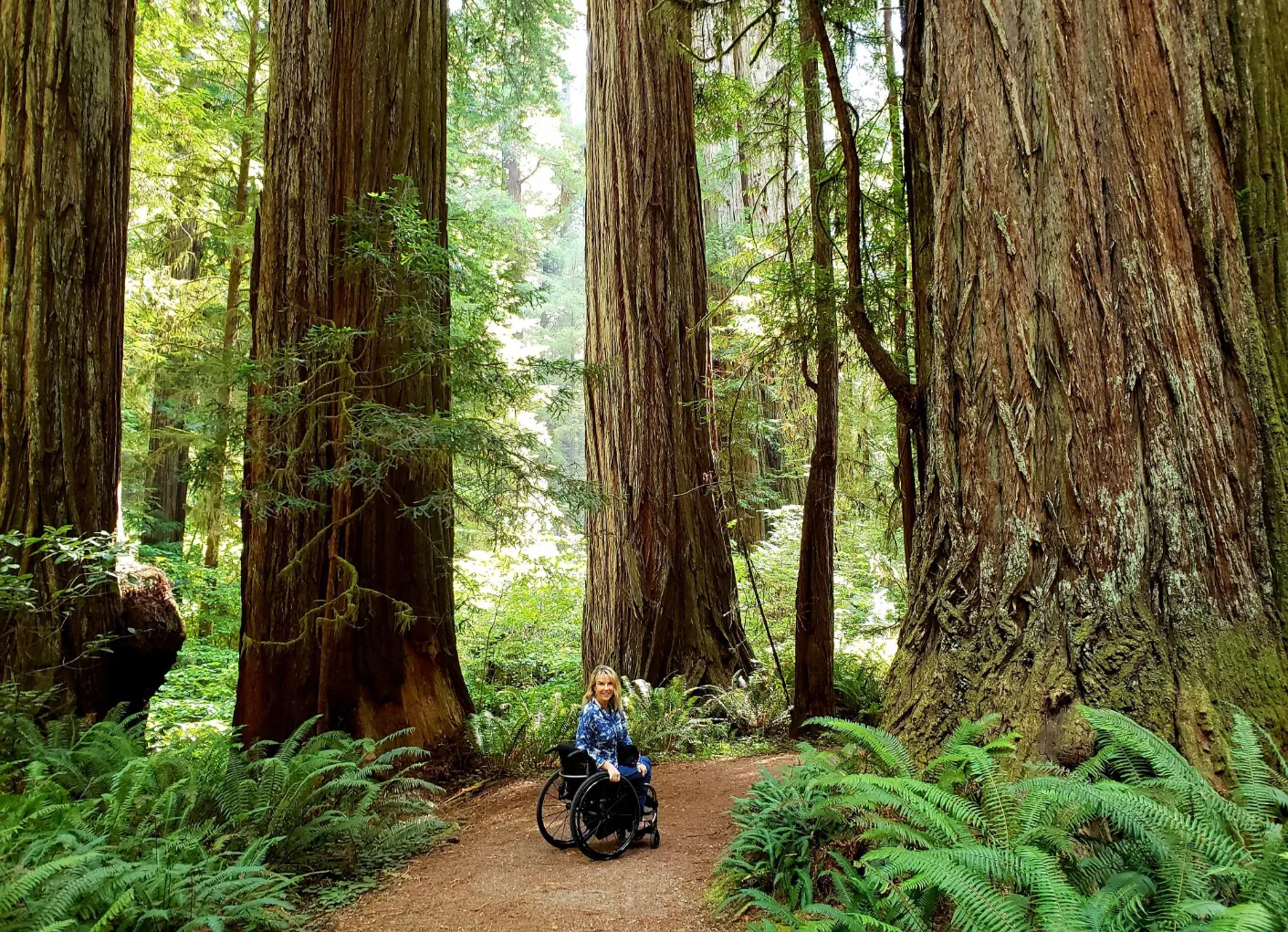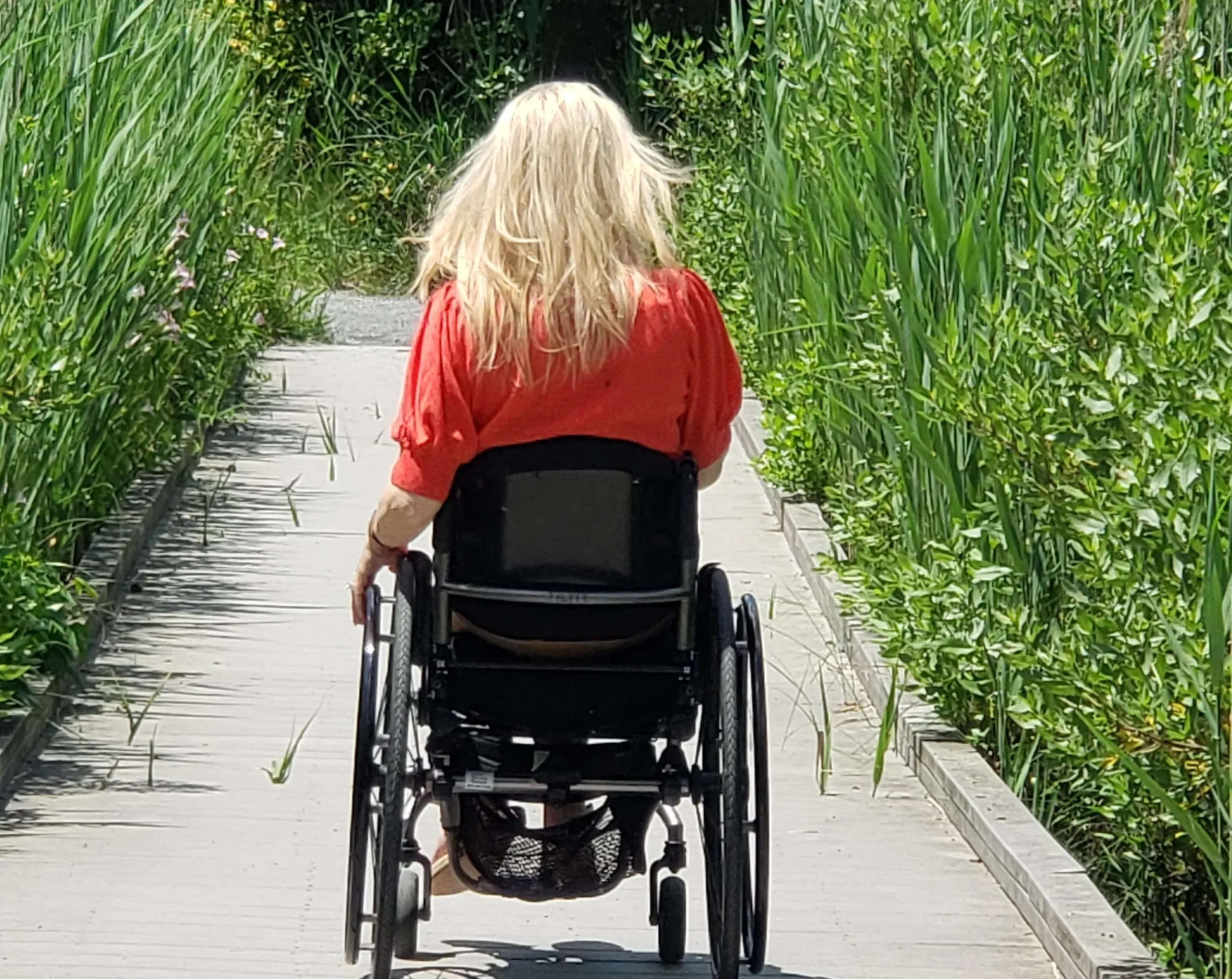Kelly Narowski is a disability rights advocate. In our last issue, Kelly shared her adaptive sports experiences. Here she shares tips and insights on air traveling for wheelchair users.
AJ: Tell us how you handle traveling with your wheelchair, especially when it comes to air travel?
KN: I could write a book about this topic! Traveling as a wheelchair user is much more challenging than traveling as a walker. For comparison purposes, I had 25 years of walking. While traveling is stressful for anyone, especially post-COVID, we have a lot more to plan and worry about. Besides flight delays, cancellations and lost luggage, we have to worry about planning for not being able to go to the bathroom on the plane: the #1 biggest hurdle for traveling chair-users.
We have to worry about the air carrier damaging our mobility devices. Under the Air Carrier Access Act (ACAA), we have a right to stow our mobility device in the cabin’s closet if the aircraft has over 100 seats. I often do that because it provides me peace of mind. I’ve had wheelchair-using friends have their chairs damaged, destroyed or left at the departure airport. Unfortunately, people with power chairs or large manual chairs are always stuck getting their chairs put into the belly of the plane.
Airlines sometimes leave people with mobility-related disabilities on the plane too long. Then the person might miss their connecting flight. I have been left over 30 minutes three times in the past couple years and other than that, a couple times in the past 24 years. I filed DOT complaints and the law mandates the airline has to get back to you. But, I’ve found they don’t really do anything except offer a very small voucher.
AJ: What about accommodations and ground transportation?
KN: Wheelchair users have to worry about the hotel room not being truly accessible when they check in. Many chair users have to worry about beds being too high, especially since the ADA regulations don’t mandate a particular bed height or range. I’m staying in a hotel right now that doesn’t have a grab bar on the wall next to the toilet like they’re supposed to! I’m traveling solo, so that’s dangerous. It’s a big chain that’s normally great, so I was surprised.




When it comes to car rentals, we have to worry about hand controls being done correctly. It used to be that I had a problem with maybe one out of thirty rentals. Nowadays, it seems to be about half the time. No matter how far in advance you book, no matter if you verify a day or two beforehand too, car rental agencies will sometimes put hand controls in a high vehicle that’s impossible to get into independently OR not put them in at all! This is a huge fiasco when traveling alone, especially if you have to drive a long way. It’s actually my biggest fear when traveling solo.
AJ: How do you navigate unfamiliar places and find accessible routes when you’re on the go?
KN: In the U.S., this isn’t difficult. Outside the U.S., it just takes planning and research – lots of internet time.
AJ: What advice do you have for other wheelchair users who are interested in traveling but might feel intimidated or uncertain about the process?
KN: It’s very doable! There will be problems occasionally, but it’s manageable with lots of planning and so worth it! If you’re intimidated, consider using an accessible travel agency. Reach out to well-traveled wheelchair users for advice For instance, I help out by letting people know which places are accessible, which places aren’t, and give hotel recommendations, especially internationally.
AJ: Is there anything else you’ll like to add?
KN: Know your rights. Become very familiar with the Air Carrier Access Act of ‘86. For instance, in the U.S., you have a LEGAL right to pre-board. It’s not just best practice, like in Europe. Also, be very familiar with Title III of the ADA. An individual with a mobility-related disability should know about it anyway, but it also pertains to travel (e.g., car rental agencies, ground transportation, hotels, restaurants, stadiums, stores, theaters and other public accommodations).
One thing people tend not to know is that if a hotel offers a complimentary shuttle for guests (usually it’s to and from the airport), they have to offer free accessible transportation to guests who need it. I usually just have them pay for a cab, but they also have to provide a van with a lift or ramp for those who need it. Stay informed by reading up on the Air Carrier Access Act, or learning more about Title III of the ADA. Find more about Kelly on her website.
